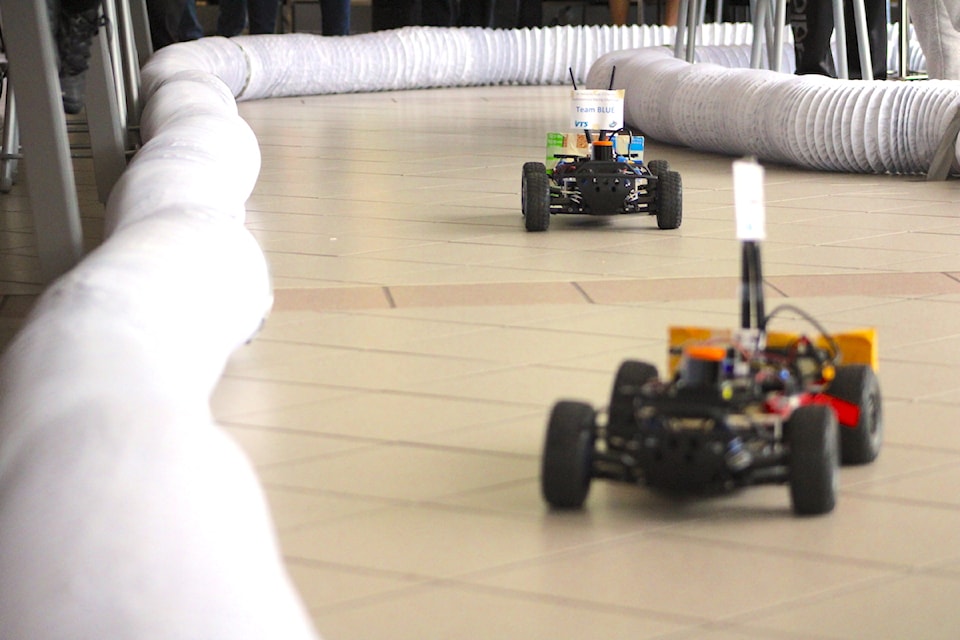As two small cars whizzed around a makeshift track set up on the tile floor of the University of Victoria's David Strong building, engineering students on Thursday (Aug. 22) looked on to see if their months of work would translate into taking their hands off the controls
The students built the autonomous driving cars over the last three months and wrote the software that would allow the cars to adapt to their surroundings in real time. On Thursday, two teams went head-to-head in a series of races to see whose car could get around the track the fastest and smoothest.
Lin Cai, UVic engineering professor, said the project was a good way to integrate knowledge from various disciplines – including signal processing, artifical intelligence and different kinds of engineering – with goal of making the cars operate without incident. It also looked to give students a hands-on way to apply what they've learned in the classroom.
"In real life, there are so many unexpected things and many are not taught in the textbook, but they need to solve those problems," Cai said, noting one team's car had problems during their time trial runs but the students were able to correct those issues within hours. “Life is full of uncertainty and full of challenges, and with faster ways to think, process and make good decisions, they can overcome those barriers and achieve good results."
The cars contained similar technology to their full-sized autonomous counterparts, like a laser-based sensor that detects obstacles in their path.
Ray Zhu, the student leader of the red team, said that after assembling their car, his side focused on playing around with their algorithm to optimize how it recognized gaps. Those gaps being measured by the car's sensors would then determine how the vehicle adjusted its steering and velocity.
The car-building and racing exercise gave them a practical way to apply their theoretical knowledge, the engineering student said.
"As a student, it's quite useful for us, especially when we want to step into the industry," he said.
While it required some late nights of problems solving, Zhu said it was fun to be part of the project, especially when they finally got to see their car speed around the track.
It was also rewarding to have students from the various academic backgrounds leverage their combined knowledge to solve problems, Cai and Zhu said.
Chen Wang, who headed up the blue team, said before the race that he expected lots of crashes. Still, he expected his team to come out on top.
"I want to win, of course," he said.
The project helped him get experience in various aspects of leadership, Wang said. While his team ran into some problems that seemed impossible, in the end they were able to solve them.
“The saying that ‘Nothing is impossible’ is actually true.”



